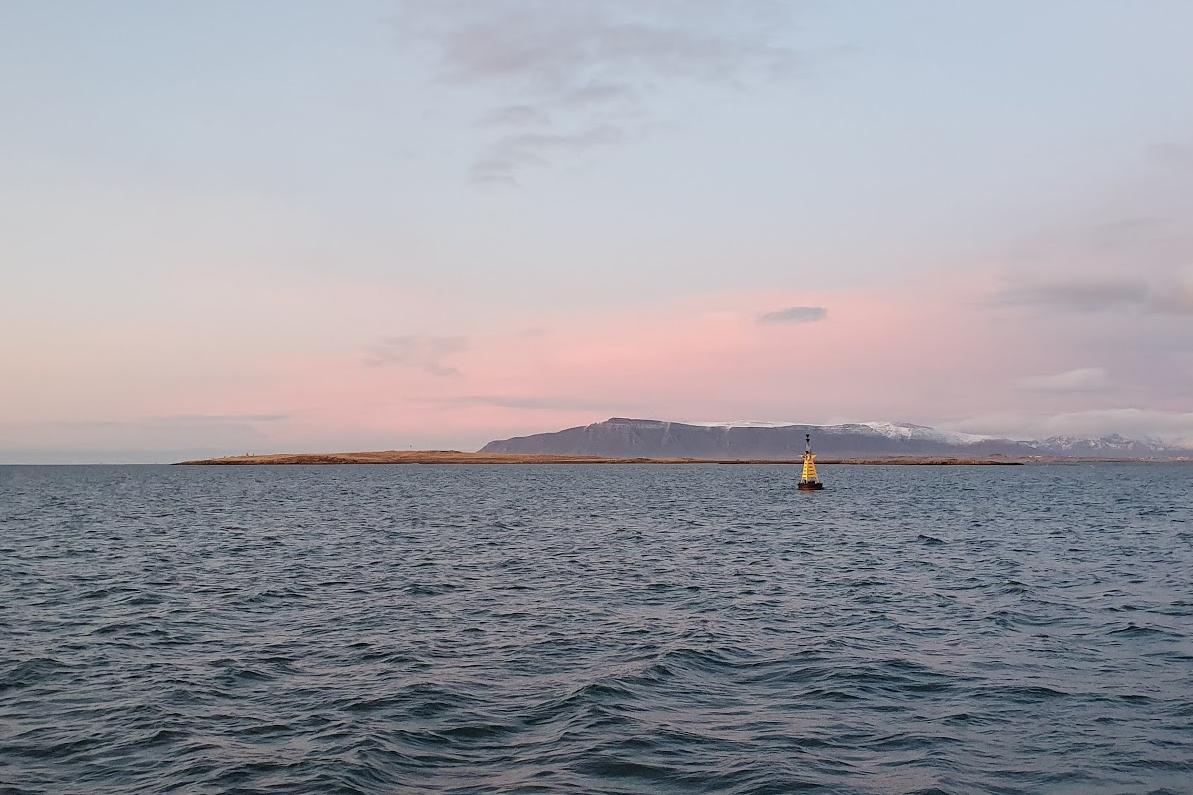Islands of Engey, Akurey, Therney, and Lundey
Outdoor recreation areas
Engey
101 Reykjavík

About the islands
The islands in Kollafjörður play an important role in Reykjavík's history. Various farming activities took place there, mainly utilizing natural resources such as bird eggs and seafood, as well as cultivation like field crops. Viðey is the largest and most well-known, but the other four islands—Engey, Akurey, and Þerney—are equally interesting. All the islands have significant bird nesting sites. There are no scheduled boat trips to the islands, but anyone is free to visit them. Engey has a considerable eider duck nesting area. Visitors need to be mindful of this. All the islands are listed in the Nature Conservation Register. Þerney has pastures used as summer break spots for livestock from the Family Park & Zoo, mainly sheep and goats.
Basic information
Size: Engey is the second-largest island in Kollafjörður (Viðey is the largest), about 0.4 km² in area and 1,500 m long. Þerney is similar in size (0.4 km²) but somewhat wider. Akurey and Lundey are the smallest. Akurey is low-lying and flat, about 0.25-0.50 hectares in area. It was protected in 2019. Lundey is about 400 m long and 150 m wide.
It includes: Bird life - Eider nesting - Viewpoint - Sailing.
History
Engey has likely been inhabited since the settlement of Iceland. In 1379, a church was consecrated on the island by Oddgeir Þorsteinsson, Bishop of Skálholt. Settlement in Engey ended in 1950, and in 1966 all houses were burned and demolished.
Engey residents were pioneers in shipbuilding and shaped the so-called Engey style of boats in the latter half of the 19th century. Kristinn Magnússon was the foremost shipbuilder, constructing over 200 ships.
In 1870, a light beacon was placed in Engey, one of the first signs of an entrance lighthouse in Reykjavík.
Field crops were grown on Akurey and Þerney.
Flora and wildlife
Engey has extensive grasslands, mostly old hayfields. There is wetland in the middle of the island with sedge predominant. Beautiful shore vegetation is found on gravel ridges in the southern part of the island, including oxeye daisy, sea kale, and lyme grass. Gulls are the most prominent birds in Engey, especially lesser black-backed gulls and this is one of their largest nesting sites in Reykjavík. Over 100 pairs of eider ducks nest there, and eiderdown is collected from the nests. More than twenty species are likely nesting birds in Engey.
Þerney also has old hayfields with grass species predominant. Oat-grasses, rare nationwide, have been found in Þerney. Caraway is also found in Þerney. Other vegetation includes wetlands, bare patches, vegetated gravels, and shore vegetation. Nearly 100 tall plant species have been found in Þerney, making it the most diverse in vegetation of the four islands. Gulls are prominent, with great black-backed and lesser black-backed gulls nesting on the island. There is also eider duck nesting on the island, the largest nesting site of all the islands in Kollafjörður.
Akurey is lush due to fertilization from birds. Several plant species are dominant, such as common chickweed, annual meadow-grass, smooth meadow-grass, common sorrel, and good king henry, as well as garden angelica. Waterfowl are prominent on Akurey, with likely five duck species nesting there in addition to greylag geese. There is also a puffin colony on the island and a small arctic tern colony. Red phalarope once nested in Akurey, one of the rarest birds in Iceland.
Lundey has a considerable puffin colony, as its name suggests, and also a black guillemot colony.
References
- Kristbjörn Egilsson, Ævar Petersen, Bergþór Jóhannsson, Haukur Jóhannesson, and Agnar Ingólfsson. 1985. Innes. Nature, heritage and land use: Akurey, Engey, Lundey and Þerney, vegetation and birds. Reports prepared by the Institute of Natural History for the Site Selection Committee.
- Ólafur Einarsson. 1997. Þerney, birds 1997. Prepared by the Institute of Natural History for the Reykjavík City Horticulture Department.
- Þorleifur Óskarsson. 2002. History of Reykjavík: for a thousand years: 870-1870. Iðunn, Reykjavík.